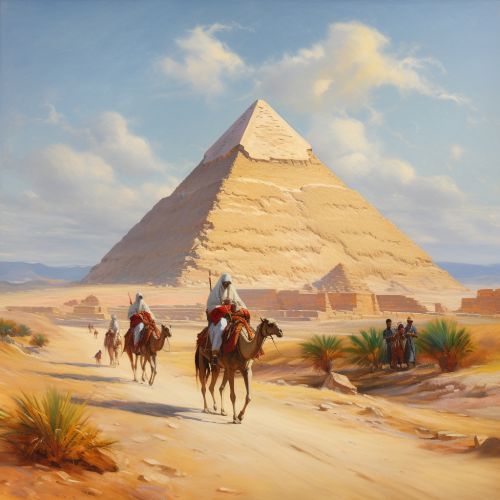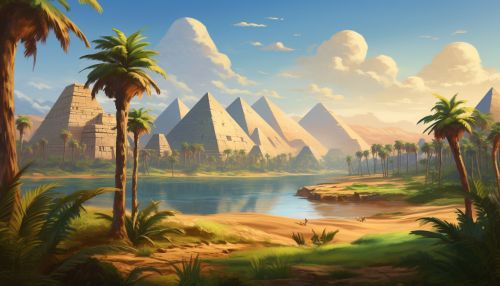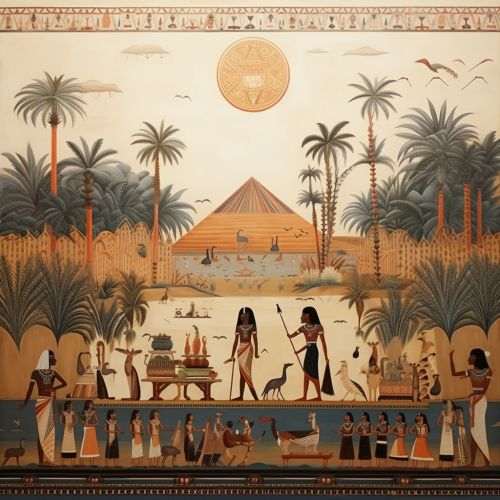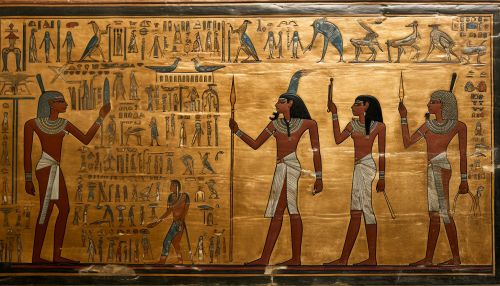Egyptians
Ancient Egypt
Ancient Egypt was a civilization of ancient North Africa, concentrated along the lower reaches of the Nile in the place that is now the country Egypt. Ancient Egyptian civilization followed prehistoric Egypt and coalesced around 3100 BC (according to conventional Egyptian chronology) with the political unification of Upper and Lower Egypt under Menes (often identified with Narmer).


The history of ancient Egypt occurred as a series of stable kingdoms, separated by periods of relative instability known as Intermediate Periods: the Old Kingdom of the Early Bronze Age, the Middle Kingdom of the Middle Bronze Age and the New Kingdom of the Late Bronze Age.
Society
Egyptian society was highly stratified, with a small elite ruling over a largely agrarian population. The pharaoh was the absolute monarch of the country and, at least in theory, wielded complete control of the land and its resources. The king was the supreme military commander and head of the government, who relied on a bureaucracy of officials to manage his affairs. In charge of the administration was his second in command, the vizier, who acted as the king's representative and coordinated land surveys, the treasury, building projects, the legal system, and the archives.
Religion
The religion of ancient Egypt was a complex system of polytheistic beliefs and rituals that formed an integral part of ancient Egyptian society. It centered on the Egyptians' interaction with many deities believed to be present in, and in control of, the world. Rituals such as prayers and offerings were provided to the gods to gain their favor.
Language
The Egyptian language is a northern Afro-Asiatic language closely related to the Berber and Semitic languages. It has the second longest history of any language (after Sumerian), having been written from c. 3200 BC to the Middle Ages and remaining as a spoken language for longer. The phases of ancient Egyptian are Old Egyptian, Middle Egyptian (Classical Egyptian), Late Egyptian, Demotic and Coptic. Egyptian writings do not show dialect differences before Coptic, but it was probably spoken in regional dialects around Memphis and later Thebes.
Art
Ancient Egyptian art refers to paintings, sculptures, architecture, and other arts produced by the civilization of ancient Egypt in the lower Nile Valley from about 3000 BC to 30 AD. Ancient Egyptian art reached a high level in painting and sculpture and was both highly stylized and symbolic. Much of the surviving art comes from tombs and monuments and thus there is an emphasis on life after death and the preservation of knowledge of the past.


Architecture
The architecture of ancient Egypt includes some of the most famous structures in the world: the Great Pyramids of Giza and the temples at Thebes. Building projects were organized and funded by the state for religious and commemorative purposes, but also to reinforce the wide-ranging power of the pharaoh. The ancient Egyptians were skilled builders; using only simple but effective tools and sighting instruments, architects could build large stone structures with great accuracy and precision that is still envied today.
Legacy
The civilization of ancient Egypt left a lasting legacy. Their monuments, such as the Great Sphinx and the pyramids of Giza, are still some of the most recognizable artifacts in the world today. They also made significant advances in technology, medicine and mathematics which have had a lasting impact on the world.
